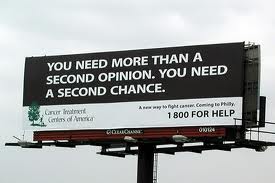Advertising cancer treatment options is a necessary action as each year globally, about 14 million people learn they have cancer, and 8 million people die from the disease, according to research done by the Center for Disease Control and Prevention. With such a rapidly increasing target audience, it is obvious cancer care is big business and there are significant opportunities for unethical marketing practices by various segments of the industry.
“Cancer is a bad word,” said Randall Holcombe, Director of Clinical Cancer Affairs for Mount Sinai Health System. “It’s the disease that people fear most.” These comments were shared during an article by Lisa Marie Potter, Inside Science.
The duration of Potter’s article further advocated for strict marketing guidelines to be enforced for cancer care entities to follow in the best interest of the vulnerable parties involved, as she discussed the issue with Holcombe and also introduced the opinions of Trevor Hedberg, a PhD candidate at the University of Tennessee at Knoxville who co-authored an article in 2013 about the ethics of marketing to vulnerable populations and was not involved in the report.
“It’s not inherently wrong to market to vulnerable populations,” said Hedberg. “Though vulnerable populations may be at risk of being harmed by immoral marketing campaigns, “you just have to hold yourself to a higher standard than you would to other clients,” says Hedberg.
Because the target population is especially vulnerable, it is essential that strict ethical guidelines are adopted and that appropriate oversight be put in place to ensure compliance (Holcombe, 2015).The primary stakeholders for marketing cancer care are pharmaceutical companies and large medical centers striving for increased market share. The target populations for marketing of cancer include practitioners as well as consumers. The latter group is especially vulnerable because of fears and anxiety related to their diagnosis (Holcombe, 2015).
Recommendations for cancer marketing include: ensuring fair and balanced promotion of cancer services, avoiding exaggeration of claims in the context of reputational marketing, providing data and statistics to back up direct and implied assertions whenever possible and defining eligible patient groups in the context of marketing for research.
Although, these recommendations are ideal for the audiences, how will cancer care entities meet these expectations and remain competitive? In an article by Neil Versel, MedCity News, these options are conversed. Here is an excerpt:
Pharma companies are the “slowest of the slow” when it comes to changing their marketing strategy because they are so heavily regulated, Hashi said. But some are catching on quickly to the trend of online video; Hashi noted that Novartis and AstraZeneca in particular have reached out on social media more in the last 18 months. (This month, a longtime expert in pharma social media, Craig DeLarge, joined Takeda Pharmaceutical as the head of digital acceleration for emerging markets, with a focus on China, South Korea, Russia and Brazil.)
New apps such as Periscope and Meerkat that let people stream live video through their Twitter accounts, could change the market again. For example, Hashi said that a healthcare advertiser could share interesting content from a conference around the world in real time. “We haven’t seen a healthcare advertiser use this yet,” he said. But it’s probably coming.
As the bustling cancer care industry continues to grow, the means in which to advertise these developments will also, however it is unclear if the ability to regulate them will be able to keep up.
What are your thoughts?
References
Holcombe, R. F. (2015). The ethics of marketing cancer. Journal of Cancer Policy, 3, 1-2. doi:10.1016/j.jcpo.2014.11.001
Statement of Ethics. (n.d.). Retrieved from https://archive.ama.org/Archive/AboutAMA/Pages/Statement%20of%20Ethics.aspx
Versal, N. (2015, May 18). From cancer to feet: The power of Twitter in healthcare – MedCity News. Retrieved from http://medcitynews.com/2015/05/healthcare-from-a-twitter-point-of-view/


4 Responses to Communicating to cancer: The delicacy of marketing to potential patients.